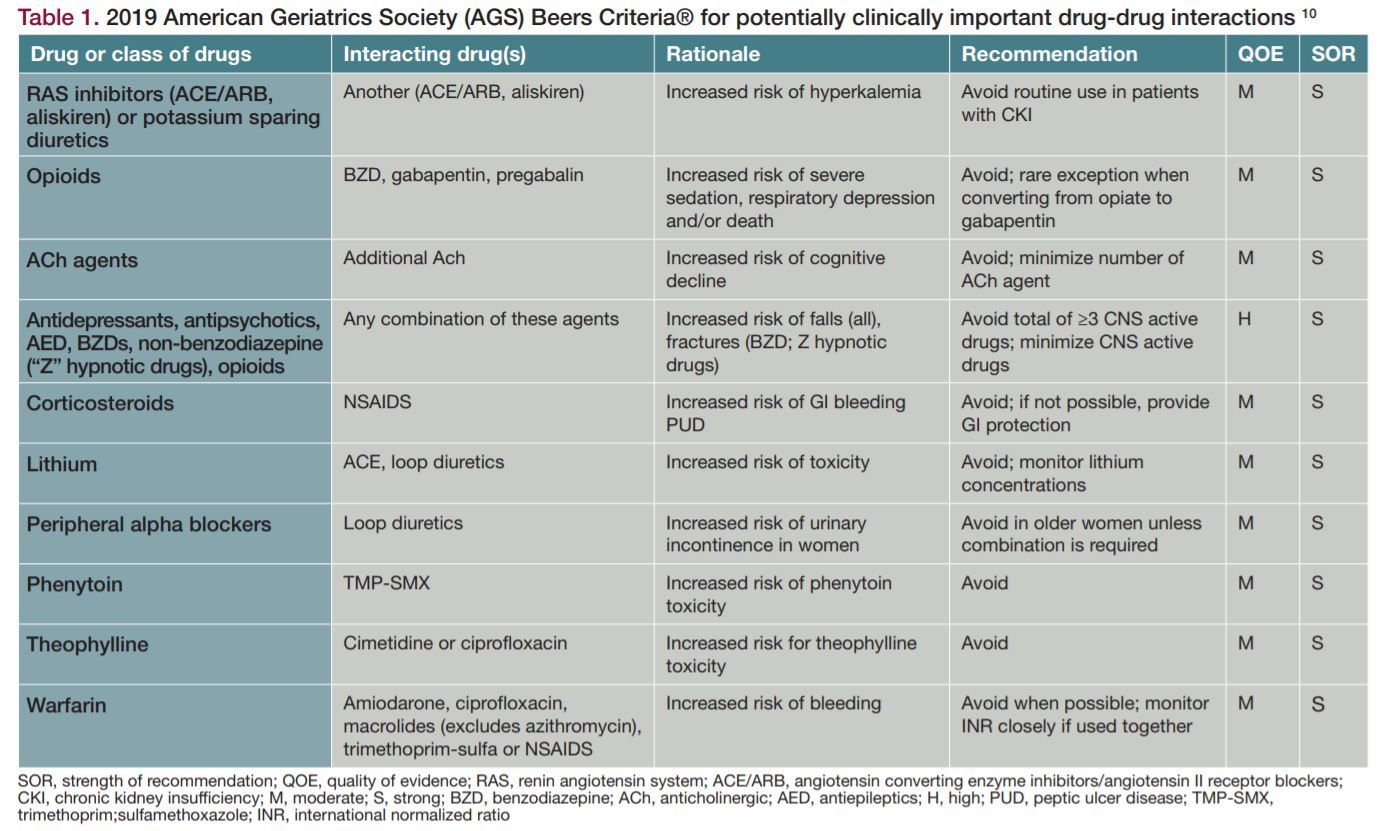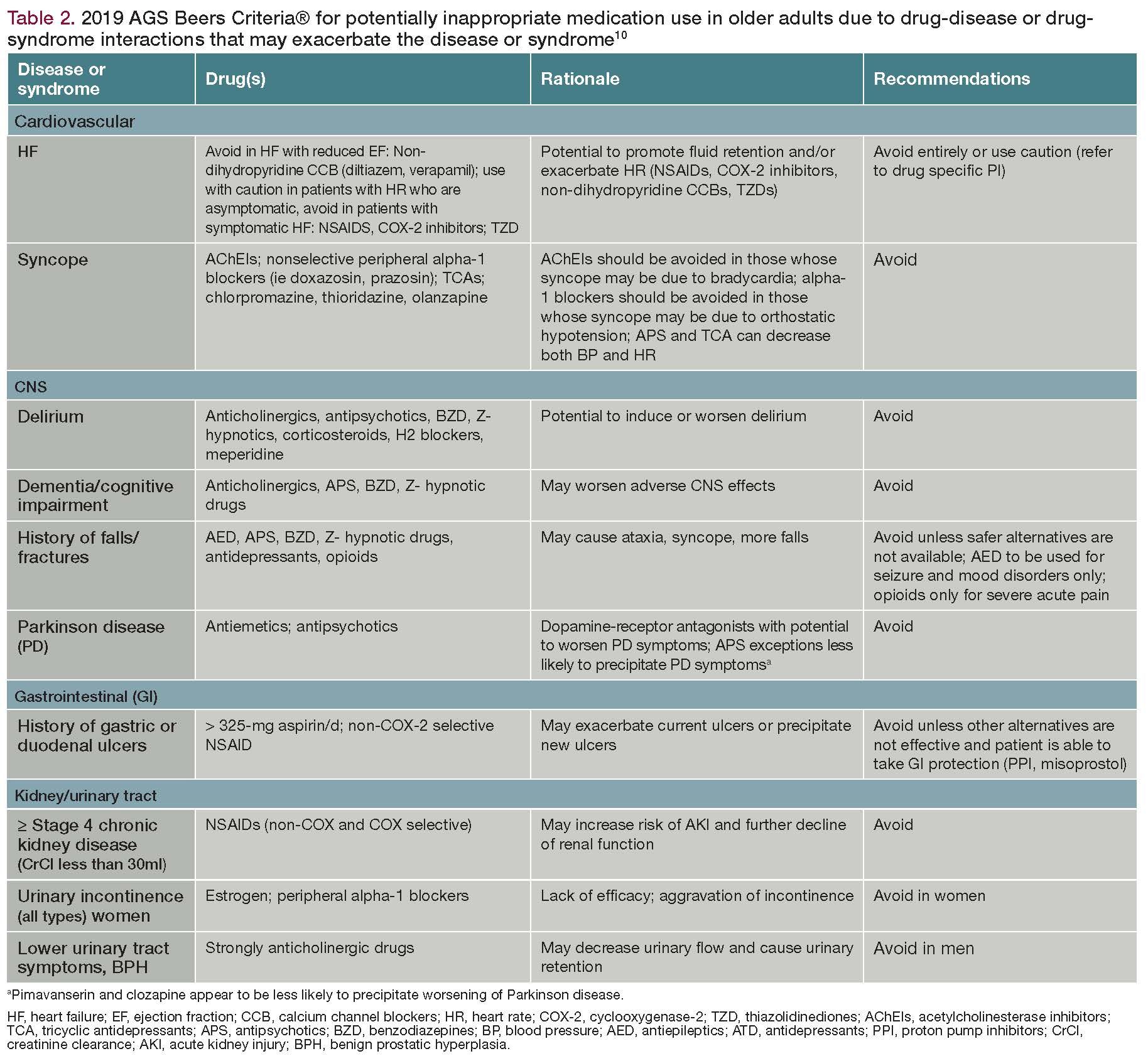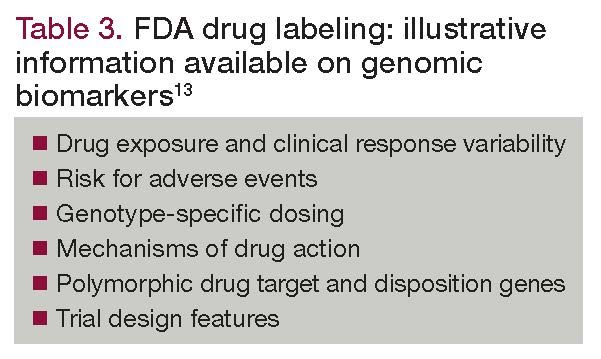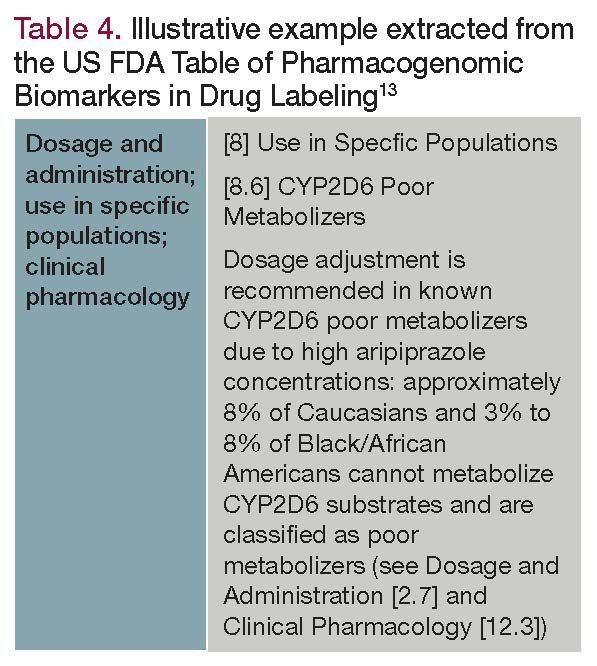Publication
Article
Psychiatric Times
Exploring Psychotropic Drug Interactions
The complexity of addressing and avoiding drug interactions has become more challenging with the vast increase in the number of new medications.
PREMIERE DATE: June 20, 2020
EXPIRATION DATE: January 20, 2022
This activity offers CE credits for:
- Physicians (CME)
- Other
All other clinicians either will receive a CME Attendance Certificate or may choose any of the types of CE credit being offered.
ACTIVITY GOAL
The goal of this activity is to provide an understanding of interactions associated with psychotropic medications.
LEARNING OBJECTIVES
- After engaging with the content of this CME activity, you should be better prepared to:
- Identify challenges associated with evaluating and predicting potential drug interactions
- Develop methods for monitoring drug interactions and identifying opportunities to mitigate risk to ensure optimal patient safety
- Recognize the role and appropriate use of decision support technology that provides drug interaction alerts
- Discuss the potential clinical implications of drug interactions in high-risk individuals
TARGET AUDIENCE
This continuing medical education (CME) activity is intended for psychiatrists, psychologists, primary care physicians, physician assistants, nurse practitioners, and other health care professionals who seek to improve their care for patients with mental health disorders.
ACCREDITATION/CREDIT DESIGNATION/ FINANCIAL SUPPORT
This activity has been planned and implemented in accordance with the accreditation requirements and policies of the Accreditation Council for Continuing Medical Education (ACCME) through the joint providership Physicians’ Education Resource®, LLC and Psychiatric Times. Physicians’ Education Resource®, LLC is accredited by the ACCME to provide continuing medical education for physicians. Physicians’ Education Resource®, LLC designates this enduring material for a maximum of 1.5 AMA PRA Category 1 Credits™. Physicians should claim only the credit commensurate with the extent of their participation in the activity. This activity is funded entirely by Physicians’ Education Resource®, LLC. No commercial support was received.
OFF-LABEL DISCLOSURE/DISCLAIMER
This CME activity may or may not discuss investigational, unapproved, or off-label use of drugs. Participants are advised to consult prescribing information for any products discussed. The information provided in this CME activity is for continuing medical education purposes only and is not meant to substitute for the independent clinical judgment of a physician relative to diagnostic or treatment options for a specific patient’s medical condition. The opinions expressed in the content are solely those of the individual faculty members and do not reflect those of Physicians’ Education Resource®, LLC.
FACULTY, STAFF, AND PLANNERS’ DISCLOSURES
The author and the staff members of Physicians’ Education Resource®, LLC and Psychiatric Times have no relevant financial relationships with commercial interests. John J. Miller, MD (external peer reviewer), is on the Speaker’s Bureaus for Sunovion, Otsuka/Lundbeck, Allergan, Teva, and Neurocrine; he is also on the Advisory Boards for Janssen and Alkermes. The staff members of Physicians’ Education Resource®, LLC and Psychiatric Times have no relevant financial relationships with commercial interests. For content-related questions, email us at PTEditor@mmhgroup.com; for questions concerning the accreditation of this CME activity or how to claim credit, please contact info@gotoper.com and include Exploring Psychotropic Drug Interactions in the subject line.
HOW TO CLAIM CREDIT
Once you have read the article, please use the following URL to evaluate and request credit: https://education.gotoper.com/activity/ ptcme20jun. If you do not already have an account with PER® you will be prompted to create one. You must have an account to evaluate and request credit for this activity.
The complexity of addressing and avoiding drug interactions has become more challenging with the vast increase in the number of new medications and the shift in focus from time-limited acute treatments to preventive and maintenance therapy for chronic illness.1 With advancing age, older adults tend to accumulate a long list of preventive and maintenance medications, all of which often extend throughout their life once they are initiated.
Although age is a significant contributing risk factor for the use of multiple concomitant medications, the use of psychotropics for those requiring such medications is an even greater risk. In addition to addressing the need to medically manage the adverse effects caused by psychiatric medications, the risk of polypharmacy in individuals with mental illness also increases. This is often due to the fact that various treatment interventions are being managed by multiple providers for comorbid conditions. The increased use of multiple psychotropics, coupled with a heavier drug burden of medical medications, results in a greater potential for drug-drug interactions in this vulnerable population.2
With the implementation of Medicare Part D, access to medication has expanded for older adults along with an explosion of novel agents and generic drugs. Qato and colleagues3 examined medication use among older adults during 2005 to 2006 compared with 2010 to 2011. They reported that the use of at least one prescription medication increased from 84.1% to 87.7% (P = .003); the concurrent use of at least 5 prescription medications increased from 30.6% to 35.8% (P = .02).
Although it is best to avoid interactions whenever possible, drug combinations can be strategically used to therapeutically and synergistically exploit a planned drug interaction for purposes of amplifying or hastening a response that will enhance treatment outcomes.4 Drug interactions can generally be defined as altered clinical effects of one drug in the presence of another. However, drug interactions can be more appropriately categorized as drug-drug, drug-disease, drug-food, drug-gene, and even drug-laboratory test interactions that can sometimes result in serious sequelae. Among the most harmful drug interactions is one that results in increased toxicity of one or both agents. However, interactions resulting in decreased efficacy of essential medications leading to treatment failure should be equally concerning.
Drug interactions are often predictable, likely avoidable, and should be routinely considered whenever more than one medication is used in a regimen. In psychiatric medication management, it is often more the rule than the exception that the failure of one medication to achieve symptom remission is the most commonly reported rationale for polypharmacy.5 Despite efforts to optimize monotherapy, refractory mental illness is a challenge that often requires more aggressive interventions. As novel agents become available, the reports of drug-drug interaction studies for new medications are extremely limited and often only include a few short-term case experiences or studies limited to healthy volunteers.5
Psychotropics and other medications
Mechanisms behind drug-drug interactions
Drug-drug interactions are commonly recognized to be a consequence of pharmacokinetic mechanisms, altered metabolism being among the more commonly reported complications. Drug metabolism is highly specific to the medication and may involve either phase I or II metabolism or even both phases. The more commonly recognized metabolic pathway of drugs, phase I occurs most frequently through the liver and results in a substrate drug being induced or inhibited by another, depending on the hepatic enzyme (eg, cytochrome P450 [CYP450] is involved in the process.)6
Medications can be inhibitors or inducers of one or more CYP450 enzymes as well as acting as substrates to other drugs for other enzymes. Higher risk substrates include medications that have narrow therapeutic windows, translating into small increments of tolerance between efficacy and toxicity and with consequences that carry a great deal of risk to the patient. Some examples of high risk drug-drug interactions are reported by the Beers Criteria, which is later mentioned in greater detail as a high alert for older adults (Table 1 and Table 2).
Metabolism and potential for drug-drug interactions that occur during metabolism are possible in other tissues of the body including, but not limited to, the kidney, lungs, and gastrointestinal tract. Less commonly recognized are the Phase II metabolizing enzymes that play an important role in the biotransformation from inactive prodrugs to active substances, ultimately facilitating the conjugation reactions needed to excrete a more hydrophilic metabolite.6
Table 1

While the uridine diphosphate (UDP)-glucuronosyltransferases (UGTs) enzymes are understood to be the most commonly involved Phase II enzyme, the sulfotransferases, N-acetyltransferases, glutathione S-transferases, and various methyltransferases such as thiopurine S-methyl transferase, and catechol O-methyl transferase are also widely accepted for their significant role in this metabolic pathway.6 The 3-hydroxybenzodiazepines such as lorazepam, oxazepam, and temazepam undergo Phase II conjugation reactions and are otherwise absent Phase I CYP450 interactions.
However, these agents have demonstrated susceptibility to UGT-mediated drug interactions involving antiepileptic drugs such as valproic acid (and all valproate formulations), carbamazepine, and lamotrigine, which have been studied in vitro. While such Phase II reactions may be considered less clinically significant, UGT inhibition by valproic acid/valproate is known to contribute to the life-threatening Stevens Johnson syndrome rash when concomitantly administered with lamotrigine and thus requires significant care when managing such combinations. Paliperidone, the 9-hydroxy metabolite of risperidone, undergoes primarily Phase II conjugation, which is reported to account for more than 60% of its overall metabolic pathway. Other antipsychotic agents such as haloperidol and asenapine also have Phase II elimination pathways.7 Additionally, other pharmacokinetic processes such as absorption, distribution, and elimination are opportunities for drug-drug interactions to occur.8
Table 2.

Pharmacokinetic complications often result in pharmacodynamic consequences
Pharmacokinetic mechanisms are defined as the body’s effect on the drug whereas pharmacodynamic actions are the effects the drug has on the body. Among the more serious pharmacodynamic consequences are those that are associated with increasing cumulative burden with concomitant use of agents that share the same effect on the body. Chief among these are increased QTc prolongation, which poses increased risk of torsades de pointe and malignant arrhythmia, blood dyscrasias, and anticholinergic toxicity.9
Skelly and colleagues2 conducted a retrospective study that examined the incidence of moderate level of drug-drug interactions, which were defined as those that could result in unintended clinical effects and might require alterations in therapy and the need to monitor patients for possible manifestations of the anticipated interaction.4 Over the 3-year period, there were 1178, 1276, and 1461 moderate drug-drug interactions; the most common types reported were central nervous system depression, additive anticholinergic effects, worsening glycemic control (hyperglycemia), and additive hypotensive effects.
The most frequently encountered medications included antipsychotics, mood stabilizers, antihyperglycemics, and antihypertensive agents. The top 5 interactions by category were CNS, metabolic, cardiac, pharmacokinetic, and pharmacodynamic. The most common drug-drug interactions associated with CNS adverse effects included additive CNS depression, sleep-related behaviors, sedation, and drowsiness. Adverse effects associated with cardiac-based drug-drug interactions included increased risk of bleeding, additive hypotension, and orthostatic hypotension. The pharmacokinetic effects included altered absorption and increased drug concentration, and the pharmacodynamics effects included renal insufficiency and flushing. In psychiatry, serious and potentially fatal consequences include neuroleptic malignant syndrome, serotonin syndrome, and dermatologic manifestations such as Stevens Johnson syndrome and toxic epidermal necrolysis.
Drug-disease interactions
Medication may secondarily alter the body’s processes such that normal physiologic pathways are altered indirectly for other drugs. For example, in the case of lithium, a patient’s renal function may be sufficiently decreased as an adverse effect of NSAIDs, resulting in decreased lithium excretion and increased risk of toxicity. Diseases that are associated with organ function decline, including hepatic and renal compromise, are responsible for drug-disease interactions. Among the more notable drug-disease interactions reported in the 2019 American Geriatrics Society Beers Criteria is that occurring with the use of thiazolidinediones (pioglitazone, rosiglitazone) in patients with heart failure, due to the increased risk of fluid retention and/or exacerbation of heart failure.10
Drug-gene interactions
The recognition of genetic variation influencing drug interactions has increased significantly. Medication efficacy can be affected by pharmacogenomic variations, with the most common association translating into increased risk of toxicity due to insufficient metabolism. The alternative risk, suboptimal efficacy due to genetically enhanced metabolism, is emerging as a factor potentially responsible for treatment resistance and failure.
Table 3.

Studies demonstrating improved outcomes through identification of genetically inappropriate medications are limited and continue to spark controversy. An exception is a randomized, controlled trial that evaluated the impact of using a pharmacogenomic test compared with treatment as usual. Greden et al.11 looked at patients who were taking genetically inappropriate medications (“incongruent”) at baseline and were switched. These patients experienced greater symptom improvement (33.5% versus 21.1%; P = .002), response (28.5% versus 16.7%; P = .036), and remission (21.5% versus 8.5%; P = .007) compared with those who remained on genetically incongruent regimens. Pharmacogenetic assessments include testing for genes that encode the CYP450 metabolizing enzymes so that treatment can be made based on the patient’s genetic profile.
In response to the controversy over the lack of evidence-based conclusions associated with these genomic tests, the FDA recently launched a pharmacogenomics resource that can serve as a reference for identifying medications that may be influenced by genetically predetermined drug-drug interactions. The FDA also warns against the use of many genetic tests with unapproved claims to predict patient response to specific medications.12 The drug labeling contains detailed information about genomic biomarkers and provides prescribing recommendations based on this genetic information to avoid adverse events and to optimize drug dosing (Tables 3, Table 4, Table 5).13
Drug-food interactions
Drug-food interactions result from combining medication with food that interferes with the desired outcome.14 Although certain medications must be taken on an empty stomach due to impaired absorption, others cannot be taken with specific foods. The latter is the case with monoamine oxidase inhibitors that must also include an avoidance of foods that contain tyramine to prevent a potential hypertensive crisis.
Food-drug interactions includes drug chelation of certain antibiotics with dairy products, which result in the preferential binding of the antibiotic to the chelating agent and inadequate systemic absorption. Additional interactions include pharmacodynamic intensification of ACE inhibitor‒induced hyperkalemia with a diet rich in potassium, or the metabolic consequence of hepatic inhibition precipitated by grapefruit, and increased adverse effects of certain statin drugs. Prescribers must be vigilant in assessing the risk of the patient’s diet and current use of nutraceuticals and complementary/alternative medications, which have grown in popularity. Understanding drug-food interactions is critical to minimizing unexpected adverse drug events.15
Contributing factors and risks
Table 4.

It is also necessary to address the smoking status of the patient. The ingestion or inhalation of polycyclic aromatic hydrocarbons found in cigarette smoke, charcoal-grilled meats, and in a patient’s occupational environment is associated with induction of the cytochrome P450 (CYP) enzymes, specifically CYP1A, which results in increased clearance of medications metabolized through this pathway.16 Although few medications require proactive dose reductions when patients are planning smoking cessation, clozapine is an exception; prescribers should include a scheduled dose decrease in accordance with the cessation strategy.17
Challenges and clinical pearls
Recognize and prepare for alert fatigue
Electronic health records and clinical decision support tools can help improve patient care and outcomes. Computerized alerts warning of drug-drug interactions are designed to improve care; however, alert fatigue is commonly reported by providers.18
Caring for especially vulnerable populations
Clinicians should be aware of the most important adverse effects and drug-drug interactions of those commonly used in their daily practice.19 Staying up-to-date with emerging safety information associated with medications that are frequently prescribed within the scope of specialty practice or primary care will allow for safer prescribing. It is also important to continue to refer to multiple references when confirming a critical drug information issue or challenge.
Guilty until proven innocent
Table 5.

Consider any new symptom or disease state exacerbation or emergence as a possible adverse drug-drug interactions. Be aware of which individuals may be at increased risk for potential adverse outcomes and plan accordingly.19,20 Additionally, consideration must be given to the use of over the counter medications and complementary/alternative medications, like St. John’s Wort, which can cause oral contraceptive treatment failure and unintended pregnancy. Moreover, the pharmacodynamics and pharmacokinetic interactions between St. John’s Wort and prescribed medicines can lead to serious clinical consequences. Although it would be appropriate for St. John’s Wort to be properly labeled to alert consumers regarding the possible drug interactions, there is no oversight by the FDA of this supplement—the burden is on the prescriber and collaborating health care provider team to alert patients to possible adverse effects.21
POST-TEST
Posttest, credit request forms, and activity evaluations must be completed online at https://education.gotoper.com/activity/ptcme20jun (requires free account activation), and participants can print their certificate or statement of credit immediately (80% pass rate required). This website supports all browsers. For PER’s privacy policy, please visit https://www.gotoper.com/privacy.
PLEASE NOTE THAT THE POST-TEST IS AVAILABLE ONLINE ONLY ON THE 20TH OF THE MONTH OF ACTIVITY ISSUE AND FOR 18 MONTHS AFTER.
Dr Demler is Clinical Associate Professor, State University of New York at Buffalo Jacobs School of Medicine, Department of Psychiatry; and Director of Psychiatric Pharmacy Residency Programs, State University of New York at Buffalo School of Pharmacy and Pharmaceutical Sciences, Buffalo, NY.
REFERENCES
1. Preskorn SH. Drug-drug interactions in psychiatric practice, part 1: reason, importance, and strategies to avoid and recognize them. J Psychiatr Pract. 2018;24(4):261-268.
2. Skelly M, Kimberly BM, Trigoboff E, et al. Drug interaction review in a psychiatric population. Eur J Clin Pharm. 2017;19:138-142.
3. Qato DM, Wilder J, Schumm LP, et al. Changes in prescription and overthe-counter medication and dietary supplement use among older adults in the United States, 2005 vs 2011. JAMA Intern Med. 2016;176(4):473-482.
4. Preskorn SH, Khan AY. Rational use of multiple medications in medicine and psychiatry: a dimensional perspective. J Psychiatr Pract. 2013;19(1):54-61.
5. Fornaro M, De Berardis D, Koshy AS, et al. Prevalence and clinical features associated with bipolar disorder polypharmacy: a systematic review. Neuropsychiatr Dis Treat. 2016;12:719-735.
6. Jancova P, Anzenbacher P, Anzenbacherova E. Phase II drug metabolizing enzymes. Biomed Pap Med Fac Univ Palacky Olomouc Czech Repub. 2010;154(2):103-116.
7. English BA, Dortch M, Ereshefsky L, Jhee S. Clinically significant psychotropic drug-drug interactions in the primary care setting. Curr Psychiatry Rep. 2012;14(4):376-390.
8. Wagner JG. Pharmacokinetics for the Pharmaceutical Scientist. CRC Press; 2019.
9. Beach SR, Celano CM, Sugrue AM, et al. QT prolongation, torsades de pointes, and psychotropic medications: a 5-year update. Psychosomatics. 2018;59(2):105-122.
10. 2019 American Geriatrics Society Beers Criteria Update Expert Panel. American Geriatrics Society 2019 Updated AGS Beers Criteria for potentially inappropriate medication use in older adults. J Am Geriatr Soc. 2019;67(4):674-694.
11. Greden JF, Parikh SV, Rothschild AJ, et al. Impact of pharmacogenomics on clinical outcomes in major depressive disorder in the GUIDED trial: a large, patient- and rater-blinded, randomized, controlled study. J Psychiatr Res. 2019;111:59-67.
12. The FDA warns against the use of many genetic tests with unapproved claims to predict patient response to specific medications: FDA safety communication. FDA. October 31, 2018. Updated April 4, 2029. Accessed May 8, 2020. www.fda.gov/medical-devices/safety-communications/fda-warns-against-use-many-genetic-tests-unapprovedclaims-predict-patient-response-specific.
13. Table of pharmacogenomic biomarkers in drug labeling. FDA. Updated February 5, 2020. Accessed May 8, 2020. www.fda.gov/drugs/scienceand-research-drugs/table-pharmacogenomic-biomarkers-drug-labeling.
14. Ryu JY, Kim HU, Lee SY. Deep learning improves prediction of drug-drug and drug-food interactions. Proc Natl Acad Sci U S A. 2018;115(18):E4304-E4311.
15. Abilify (aripiprazole) tablets, Discmelt orally disintegrating tablets, oral solution, and injection. Prescribing information. FDA; 2016. Accessed May 8, 2020. www.accessdata.fda.gov/drugsatfda_docs/label/2016/021436s041,021713s032,021729s024,021866s026lbl.pdf.
16. Elsherbiny ME, Brocks DR. The ability of polycyclic aromatic hydrocarbons to alter physiological factors underlying drug disposition. Drug Metab Rev. 2011;43(4):457-475.
17. Cole ML, Trigoboff E, Demler TL, Opler LA. Impact of smoking cessation on psychiatric inpatients treated with clozapine or olanzapine. J Psychiatr Pract. 2010;16(2):75-81.
18. Dexheimer JW, Kirkendall E, Kouril M, et al. Perception vs Reality with Medication Alert Rates; Meeting Abstract. Council on Clinical Information Technology Program. 2018;141(1).
19. Merel SE, Paauw DS. Common drug side effects and drug-drug interactions in elderly adults in primary care. J Am Geriatr Soc. 2017;65(7):1578-1585.
20. Cheng CM, Guglielmo BJ, Maselli J, Auerbach AD. Coverage of FDA medication boxed warnings in commonly used drug information resources. Arch Intern Med. 2010;170(9):831-833.
21. Soleymani S, Bahramsoltani R, Rahimi R, Abdollahi M. Pharmacokinetic interactions of Hypericum perforatum L. (St John’s wort) with conventional drugs: a review of clinical studies. Research Journal of Pharmacognosy. 2017;4(suppl):123.
























